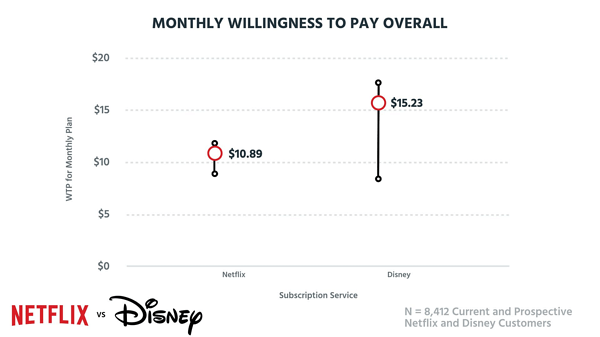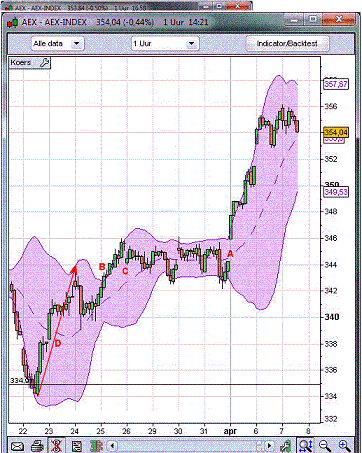Contents
Doob also chiefly developed the theory of martingales, with later substantial contributions by Paul-André Meyer. Earlier work had been carried out by Sergei Bernstein, Paul Lévy and Jean Ville, the latter adopting the term martingale for the stochastic process. Methods from the theory of martingales became popular for solving various probability problems. Techniques and theory were developed to study Markov processes and then applied to martingales. Conversely, methods from the theory of martingales were established to treat Markov processes.

The probabilities are then used to make predictions or to provide relevant information about the situation. The technical storage or access is required to create user profiles to send advertising, or to track the user on a website or across several websites for similar marketing purposes. I’m well granded in stochastic now with this article cos prior to reading this https://1investing.in/ article I ve little knowledge about it. Precise explanation on how to calculate stochastic indicator and how to use it. For the first time I now understand what the stochastic is telling me and how to properly use it. You can see, the high Stochastic shows us that price was very strong over the 5 candle period and that the recent candles are pushing higher.
Stochastics Potential Sell Signal
Of or pertaining to a process involving a randomly determined sequence of observations each of which is considered as a sample of one element from a probability distribution. As you see on the image above, the Stochastic Oscillator gives many signals. However, since the signals anticipate the real event on the chart, the Stochastic Indicator success rate is relatively low. Therefore, you should always combine this indicator with an additional trading tool or trading platform. The reason for this is that the Stochastic is not a good standalone trading indicator in online trading app.

The law of a stochastic process or a random variable is also called the probability law, probability distribution, or the distribution. A stochastic process can be classified in different ways, for example, by its state space, its index set, or the dependence among the random variables. One common way of classification is by the cardinality of the index set and the state space.
Computer science
In the early 1930s, Aleksandr Khinchin gave the first mathematical definition of a stochastic process as a family of random variables indexed by the real line. Decades later Cramér referred to the 1930s as the “heroic period of mathematical probability theory”. In 1920s fundamental contributions to probability theory were made in the Soviet Union by mathematicians such as Sergei Bernstein, Aleksandr Khinchin, and Andrei Kolmogorov. Kolmogorov published in 1929 his first attempt at presenting a mathematical foundation, based on measure theory, for probability theory.

Many problems in probability have been solved by finding a martingale in the problem and studying it. Martingales will converge, given some conditions on their moments, so they are often used to derive convergence results, due largely to martingale convergence theorems. When Stochastics get stuck in the overbought area, like at the very right of the chart, this might be a sign of a strong bullish run. In the below example of the Nasdaq 100 ETF , the Stochastic indicator spent most of its time in an overbought area.
What Is Center Of Gravity Indicator (trading strategy)
The stochastic indicator itself can range only from 0 to 100, no matter how fast the price of the underlying currency pair changes. Traditionally, readings over 80 are considered in the overbought range, and readings under 20 are considered oversold. However, these are not always indicative of impending reversal; very strong trends can maintain overbought or oversold conditions for an extended period.
The trader could, for example, use a genuine trend line to monitor an established trend and wait for the price to break the trend with confirmation from the stochastic indicator. Meanwhile, the RSI indicator measures the velocity of price fluctuations to detect overbought and oversold the main types of bank draft are levels. This indicates that selling pressure is building, and the price of the instrument may fall. After a brief market comeback, traders frequently try to enter a sell transaction. This indicates that upward momentum has slowed and that a downward reversal is going to occur.
After the work of Galton and Watson, it was later revealed that their branching process had been independently discovered and studied around three decades earlier by Irénée-Jules Bienaymé. Starting in 1928, Maurice Fréchet became interested in Markov chains, eventually resulting in him publishing in 1938 a detailed study on Markov chains. Norbert Wiener gave the first mathematical proof of the existence of the Wiener process. This mathematical object had appeared previously in the work of Thorvald Thiele, Louis Bachelier, and Albert Einstein. Are all independent of each other, and the distribution of each increment only depends on the difference in time.
- Specialties include general financial planning, career development, lending, retirement, tax preparation, and credit.
- As you see on the image above, the Stochastic Oscillator gives many signals.
- The second line (known as %D) is a simple moving average of the %K line.
- The law of a stochastic process or a random variable is also called the probability law, probability distribution, or the distribution.
The term random function is also used to refer to a stochastic or random process, because a stochastic process can also be interpreted as a random element in a function space. The terms stochastic process and random process are used interchangeably, often with no specific mathematical space for the set that indexes the random variables. But often these two terms are used when the random variables are indexed by the integers or an interval of the real line. If the random variables are indexed by the Cartesian plane or some higher-dimensional Euclidean space, then the collection of random variables is usually called a random field instead.
Stochastics are used to show when a stock has moved into an overbought or oversold position. The game ostensibly hinges on chance due to its reliance on dice, but in actuality, Chutes and Ladders is a stochastic system called an absorbing Markov chain, meaning just a portion of the system contains randomness. Another place to look will be the pattern of gravitational waves that may have been generated during inflation, called the stochastic gravitational wave background. For the last 8 years, we have been providing a wide range of trading-related blog articles, trading guides, podcast episodes and tons of trading videos on Tradeciety. Tradeciety is run by Rolf and Moritz who have over 20+ years of combined experience in Forex, stocks and crypto trading. This information is excellent quality, it is the first time I have really understood what stochastic is telling me.
Please ensure that only a reasonable number of balanced, topical, reliable, and notable further reading suggestions are given; removing less relevant or redundant publications with the same point of view where appropriate. Consider utilising appropriate texts as inline sources or creating a separate bibliography article. In 1912 Poincaré studied Markov chains on finite groups with an aim to study card shuffling. Other early uses of Markov chains include a diffusion model, introduced by Paul and Tatyana Ehrenfest in 1907, and a branching process, introduced by Francis Galton and Henry William Watson in 1873, preceding the work of Markov.
The indicator seeks to predict price reversal points by comparing the closing price to prior price movements. The indicator is based on the location of an instrument’s closing price regarding the price’s high-low range over a specified number of periods. For use in technical analysis of financial instruments, see Stochastic oscillator. This is because none of the inputs are random, and there is only one solution to a specific set of values.
Stochastic Process Definition
Stochastic modeling allows financial institutions to include uncertainties in their estimates, accounting for situations where outcomes may not be 100% known. For example, a bank may be interested in analyzing how a portfolio performs during a volatile and uncertain market. Creating a stochastic model involves a set of equations with inputs that represent uncertainties over time. Therefore, stochastic models will produce different results every time the model is run.
What Is Accumulation/Distribution Indicator (Strategy)
He currently researches and teaches economic sociology and the social studies of finance at the Hebrew University in Jerusalem. Certain gambling problems that were studied centuries earlier can be considered as problems involving random walks. For example, the problem known as the Gambler’s ruin is based on a simple random walk, and is an example of a random walk with absorbing barriers. Pascal, Fermat and Huyens all gave numerical solutions to this problem without detailing their methods, and then more detailed solutions were presented by Jakob Bernoulli and Abraham de Moivre.
A comparison of the two stochastics, fast and slow, is shown on this Nasdaq 100 ETF chart. Stochastic Fast plots the location of the current price in relation to the range of a certain number of prior bars (dependent upon user-input, usually 14-periods). The RSI is generally more beneficial in trending markets, whereas stochastics are more useful in sideways or turbulent markets. Traders who use a trend-following strategy will watch the stochastic indicator to make sure it stays crossed in one direction.
Can be interpreted as time, a stochastic process is said to be stationary if its finite-dimensional distributions are invariant under translations of time. This type of stochastic process can be used to describe a physical system that is in steady state, but still experiences random fluctuations. The intuition behind stationarity is that as time passes the distribution of the stationary stochastic process remains the same. A sequence of random variables forms a stationary stochastic process only if the random variables are identically distributed.
In addition, it is simply understood by both experienced and rookie technicians, and it tends to assist all investors in making sound entry and exit decisions on their holdings. When color reproductions are made, the image is separated into its component colors by taking multiple photographs filtered for each color. One resultant film or plate represents each of the cyan, magenta, yellow, and black data. Color printing is a binary system, where ink is either present or not present, so all color separations to be printed must be translated into dots at some stage of the work-flow.